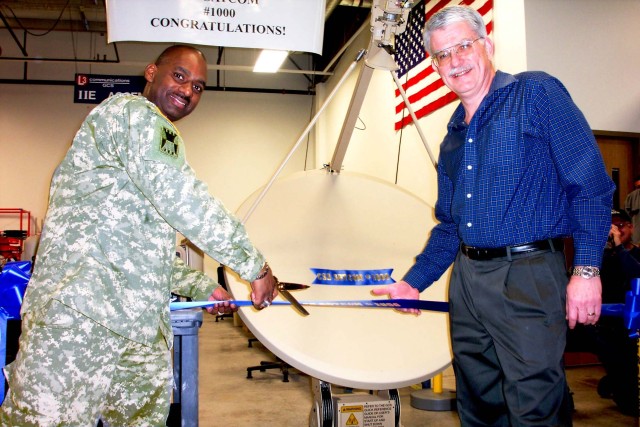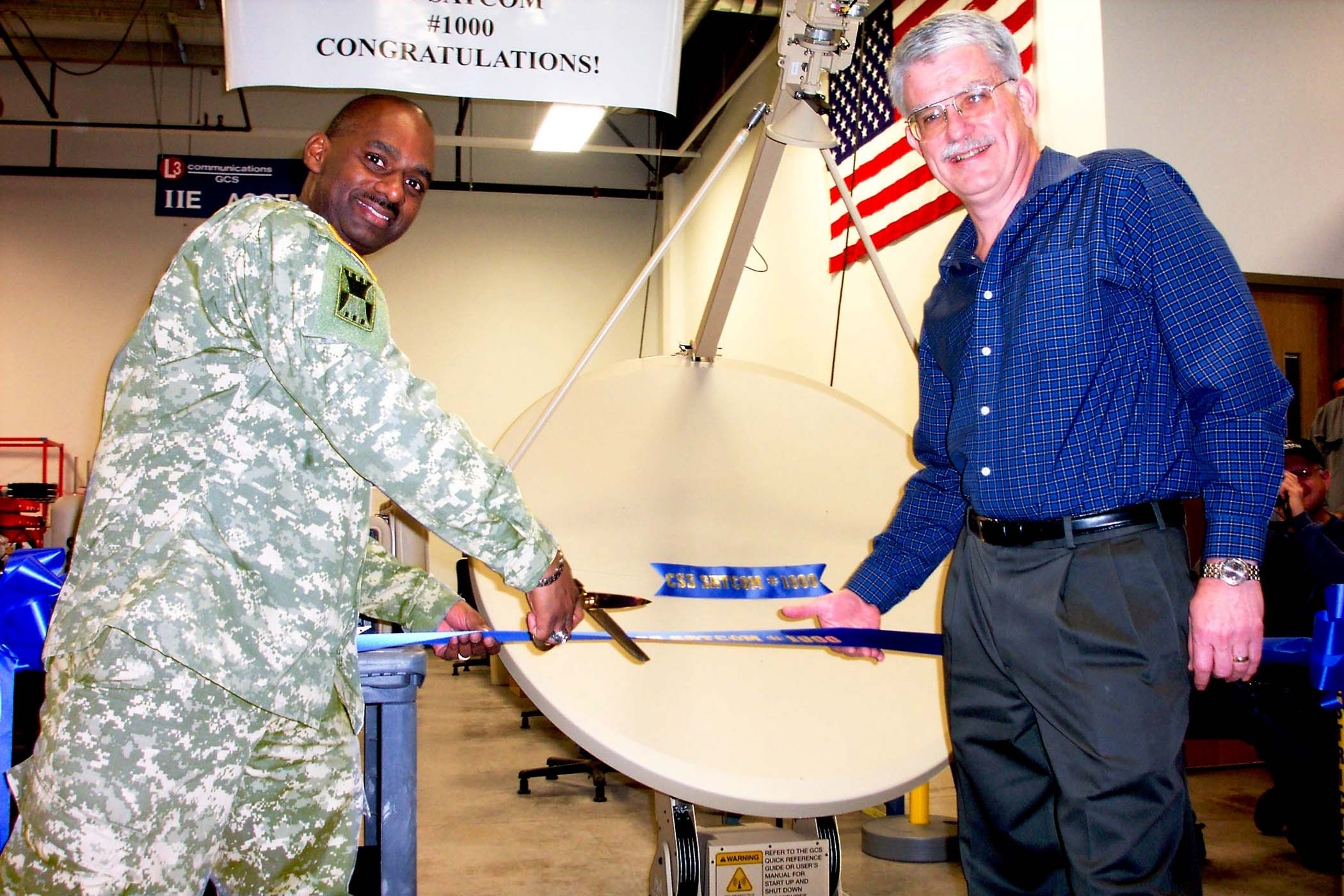
SPRINGFIELD, Va. - The 1,000th Combat Service Support Very Small Aperture Terminal rolled off the assembly line at the plant of L-3 Global Communications Solutions, Inc. in Victor, N.Y. Jan. 9.
The program to "Connect Army Logisticians" with their own managed by the Product Manager, Defense Wide Transmission Systems - part of the Army's Program Executive Office, Enterprise Information Systems' Project Manager, Defense Communications and Army Transmission Systems - started in May 2004.
More than 90 Army leaders and their industry partners met at a PM DWTS facility here on Jan. 31, 2008 to mark the milestone. Among the Army leaders were Thomas Edwards, assistant deputy chief of staff, Army G-4; Gary Winkler, program executive officer, Enterprise Information Systems; Col. Gale Harrington, PM DCATS; Lt. Col. Clyde Richards, PM DWTS; and Carl Beem, CSS VSAT combat develop, Combined Arms Support Command. The industry partners included Frank York, GCS president; Michael Wheeler, Segovia president; John Ratigan, I-Direct president, and Ken Karhuse, Eyak Technologies program manager.
Borrowing an analogy he heard from former Army Chief of Staff Gen. Peter Schoomaker, Edwards compared the early process of trying to connect Army logisticians to "slogging through a swamp," and said that for the G-4, the CSS VSAT solution was like "jumping out of a swamp and onto a rocket ship."
"The number one logistics issue out of the war (OIF) was to connect the logistician," said Edwards. "You can't run a distribution system if you don't know what the user wants. If you (the CSS VSAT government and industry team) hadn't been able to step up and make that happen, we'd still be on the sidelines. You have my personal and enduring thanks for that."
Winkler, who became the PEO EIS in Oct. 2007 after serving as Principal Director for Governance, Acquisition, and Chief Knowledge Office for the Army CIO/G-6, said that he watched the CSS VSAT program start to connect Army logisticians under former PEO EIS Kevin Carroll. "I saw it (the CSS VSAT program) from CIO/G-6," said Winkler. "It's a great program meeting a critical need for warfighters. I congratulate you on its success and look forward to its future success."
Maj. Jeff Etienne, assistant product manager, DWTS-Belvoir, told the group the history of the CSS VSAT program, from the first generation of 18 prototype units in March 2004 that utilized a .96 meter dish, to the current fourth generation 1.2 meter Hawkeye II-Enhanced units that were fielded starting with the 901st unit in Nov. 2007.
Etienne said Soldiers' demand for CSS VSATs continues to increase because it allows users to share documents, pass requisitions, collaborate and conduct meetings online and make voice-over-internet-protocol telephone calls - all without moving from their location, thus eliminating "sneaker net," the often-dangerous need to get in a convoy to hand-carry re-supply or spare parts orders on floppy disks.
"Wherever Soldiers are located around the world, they can connect to a satellite through one of our four teleports (in Maryland, California, The Netherlands and Australia)," said Etienne, adding, "I feel great every day I put on this uniform. Every day I feel like we're making a direct, positive impact on the warfighter."
Connects medical, biometrics and homeland security users, too
Richards thanked a number of people who had worked in the CSS VSAT program, including Maj. Mike Devine, the first APM-DWTS-Belvoir; George Knizewski, an engineer who helped prove the concept that small satellite terminals could connect logisticians; Charlie Moore, the program's chief for systems integration; John Andrews, the program's readiness manager; and Vincent Miragliotta, network engineer.
Richards said that the factory-to-foxhole internet capability enabled by CSS VSATs provides information dominance for CSS warfighting units and noted that, in addition to connecting logisticians, CSS VSATS now also save Soldiers lives by digitally transporting medical supply and casualty care transactions and support force protection by digitally transporting biometrics and homeland security transactions.
"We've also provided VSATs to support disaster relief efforts, such as we did after Hurricane Katrina," said Richards.
Emphasizing that his objective as a PM was to provide a faster, better and cheaper system, Richards said that he was proud that the PM DWTS and industry team had worked together to reduce the cost of individual CSS VSATs by 35 percent and made process improvements - such as doing quality inspections at the vendor's plant and shipping them directly from there to users.
"I also want to tell you that, operationally, we have not lost one single VSAT out of 1,000," said Richards.
Richards said that the original requirement from the G-4 was for 775 CSS VSATs, that there were 1,000 more "in the pipeline" and that the figure could ultimately grow to 3,000 CSS VSATs before they were done.
Edwards said it could be even more.
"I saw a chart the other day with the figure of 3,145 VSATs," said Edwards. "And that figure could grow. Keep making it better and cheaper and the whole Army will come."

Social Sharing